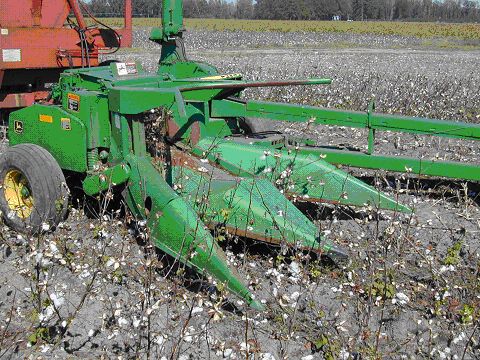The Development of Value-Added Products From Cotton Stalks and Waste-2003 Report
go.ncsu.edu/readext?451651
en Español / em Português
El inglés es el idioma de control de esta página. En la medida en que haya algún conflicto entre la traducción al inglés y la traducción, el inglés prevalece.
Al hacer clic en el enlace de traducción se activa un servicio de traducción gratuito para convertir la página al español. Al igual que con cualquier traducción por Internet, la conversión no es sensible al contexto y puede que no traduzca el texto en su significado original. NC State Extension no garantiza la exactitud del texto traducido. Por favor, tenga en cuenta que algunas aplicaciones y/o servicios pueden no funcionar como se espera cuando se traducen.
Português
Inglês é o idioma de controle desta página. Na medida que haja algum conflito entre o texto original em Inglês e a tradução, o Inglês prevalece.
Ao clicar no link de tradução, um serviço gratuito de tradução será ativado para converter a página para o Português. Como em qualquer tradução pela internet, a conversão não é sensivel ao contexto e pode não ocorrer a tradução para o significado orginal. O serviço de Extensão da Carolina do Norte (NC State Extension) não garante a exatidão do texto traduzido. Por favor, observe que algumas funções ou serviços podem não funcionar como esperado após a tradução.
English
English is the controlling language of this page. To the extent there is any conflict between the English text and the translation, English controls.
Clicking on the translation link activates a free translation service to convert the page to Spanish. As with any Internet translation, the conversion is not context-sensitive and may not translate the text to its original meaning. NC State Extension does not guarantee the accuracy of the translated text. Please note that some applications and/or services may not function as expected when translated.
Collapse ▲This is a 2003 report from a NC Specialty Crops Program Project. It is posted for historical reference purposes.
Reviewed by Jeanine Davis, NC Alternative Crops & Organics Program, Department of Horticultural Science, NC State University on 9/27/2022.
PROJECT LEADER(S): Michael D. Boyette
TYPE OF PROJECT: Research
LOCATION: Cunningham Research and Extension Center and Tull Hill Farms, Kinston, NC
IMPACT
This is a very broad and multi-disciplined project dedicated to the development of value-added products from the stalks and waste cotton left in the field after harvest. North Carolina harvests approximately 1 million acres of cotton per year yet is counted tenth in US production. The current no-till and stale row cotton cultural practices dictate that the parts of the plant left in the field after harvest be thoroughly shredded. The rank size and amounts of waste cotton left makes this a difficult and often messy process. Harvesting and removing the stalks from the field is a much better alternative provided a market for the material can be found.
INTRODUCTION
At present, four potential products are being investigated. The first is a non-woven erosion control mat. This material is being developed by a cooperative effort with Dr. Behnam Pourdeyhimi, director of the Nonwoven Cooperative Research Center in the North Carolina State University College of Textile Engineering. When enough of the material has been made, it will be tested at a number of construction sites both on and off campus. The second product is the conversion of the shredded material to fuel alcohol. This work is being investigated in cooperation with Drs. Mari Chin and Ratna Sharma of the Department of Biological and Agricultural Engineering. The third product is special purpose paper. In a cooperative effort with the Department of Wood and Paper Science, samples of the material were converted to an unbleached, strong yet biodegradable paper. Further, a large specialized paper mill in Western North Carolina has shown interest in the use of the material in one of their products. A forth product being investigated is fireplace logs. By combining the shredded material with paraffin, a product of superior burning characteristic is obtained. Research on all these products and possibly others will be accelerated in 2004.
METHODS
During the fall of 2003, approximately 15,000 pounds of cotton stalks were harvested by the simple use of a two-row silage harvester. Part of the material was baled in 500-pound bales and brought to Raleigh for further investigation. The rest of the harvested material was formed into a module using existing cotton harvesting and handling equipment and stored in Kinston, pending further need.
RESULTS
Since this investigation has just started, there are no results yet.
CONCLUSION
Because of the scope of this project, a great number of enthusiastic people have been directly and indirectly involved. Not the least of which are the growers, since this project involves discovering and developing a market for a product that currently has no value. It is also particularly appealing as it does not require any more land, fertilizer, or major equipment investments or any alteration of existing cultural practices.




